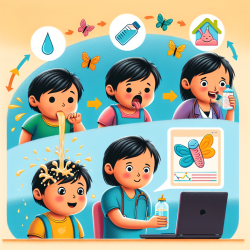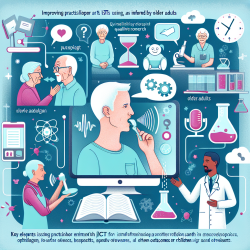Understanding TUBG1 Mutations: A New Horizon for Practitioners
As a practitioner in the field of special education and therapy, staying updated with the latest research is crucial. The article "Case reports: novel TUBG1 mutations with milder neurodevelopmental presentations" offers insightful findings that can enhance your understanding and approach to genetic counseling and therapy.
What Are TUBG1 Mutations?
TUBG1 mutations are rare genetic alterations that affect the tubulin genes responsible for brain development. These mutations can lead to a spectrum of neurodevelopmental disorders, including microcephaly, intellectual disability, and epilepsy. Traditionally, these conditions were associated with severe phenotypes, but recent research suggests a broader spectrum of manifestations.
Key Findings from the Research
- The study presents two new cases of TUBG1 mutations with milder neurodevelopmental presentations.
- Patient A exhibits microcephaly and mild intellectual disability without epilepsy or motor impairment.
- Patient B has a more typical presentation with controlled epilepsy and mild hypertonia.
- These findings expand the known spectrum of TUBG1 mutations, suggesting the possibility of less severe phenotypes.
Implications for Practitioners
Understanding the variability in TUBG1 mutations can significantly impact your approach to therapy and counseling. Here are some ways to implement these findings:
- Personalized Therapy Plans: Tailor therapy plans to accommodate the unique needs of each patient, recognizing that TUBG1 mutations can present with varying degrees of severity.
- Genetic Counseling: Provide informed genetic counseling to families, highlighting the potential for milder phenotypes and the importance of genetic testing.
- Collaborative Care: Work closely with neurologists and geneticists to develop comprehensive care plans that address both medical and educational needs.
Encouraging Further Research
The study underscores the need for further research to fully understand the genotype-phenotype correlations in TUBG1 mutations. As a practitioner, you can contribute to this growing body of knowledge by:
- Participating in research studies and clinical trials.
- Documenting and sharing case studies with the medical and educational community.
- Staying engaged with professional networks and conferences to exchange insights and findings.
By embracing the complexities of TUBG1 mutations, you can provide better support to your students and their families, fostering a more inclusive and understanding educational environment.
To read the original research paper, please follow this link: Case reports: novel TUBG1 mutations with milder neurodevelopmental presentations.










